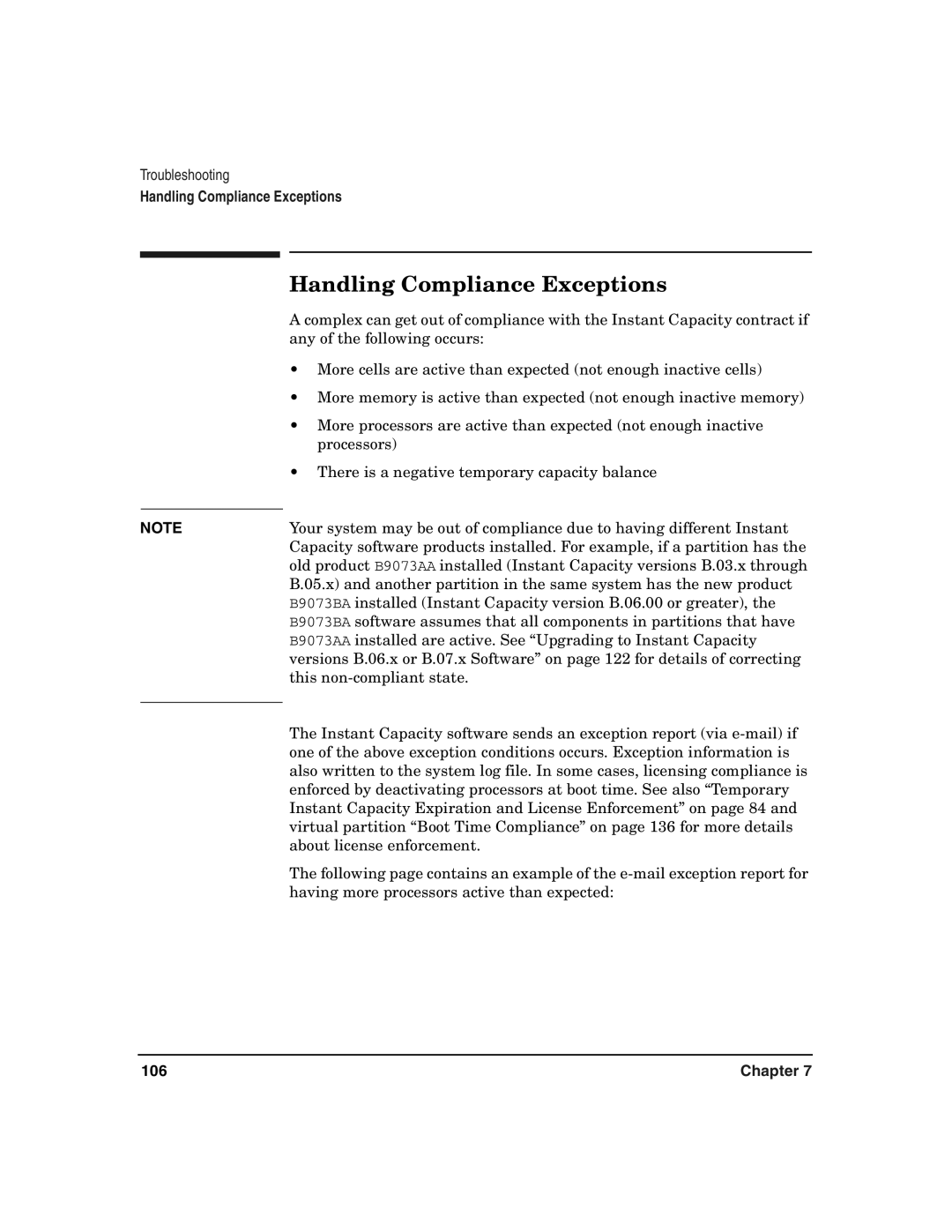
Troubleshooting
Handling Compliance Exceptions
Handling Compliance Exceptions
A complex can get out of compliance with the Instant Capacity contract if any of the following occurs:
•More cells are active than expected (not enough inactive cells)
•More memory is active than expected (not enough inactive memory)
•More processors are active than expected (not enough inactive processors)
•There is a negative temporary capacity balance
NOTE | Your system may be out of compliance due to having different Instant |
| Capacity software products installed. For example, if a partition has the |
| old product B9073AA installed (Instant Capacity versions B.03.x through |
| B.05.x) and another partition in the same system has the new product |
| B9073BA installed (Instant Capacity version B.06.00 or greater), the |
| B9073BA software assumes that all components in partitions that have |
| B9073AA installed are active. See “Upgrading to Instant Capacity |
| versions B.06.x or B.07.x Software” on page 122 for details of correcting |
| this |
| The Instant Capacity software sends an exception report (via |
| |
| one of the above exception conditions occurs. Exception information is |
| also written to the system log file. In some cases, licensing compliance is |
| enforced by deactivating processors at boot time. See also “Temporary |
| Instant Capacity Expiration and License Enforcement” on page 84 and |
| virtual partition “Boot Time Compliance” on page 136 for more details |
| about license enforcement. |
| The following page contains an example of the |
| having more processors active than expected: |
106 | Chapter 7 |
